 |
 |
 |
| |
Switch to Darunavir/C/FTC/TAF Noninferior to Continued PI Plus TDF/FTC
|
| |
| |
Download the PDF here
Week 48 results of EMERALD: A Phase 3, randomized, non-inferiority study evaluating the efficacy and safety of switching from boosted-protease inhibitors plus emtricitabine/tenofovir disoproxil fumarate regimens to the once daily, single-tablet regimen of darunavir/cobicistat/emtricitabine/tenofovir alafenamide (D/C/F/TAF) in virologically-suppressed, HIV-1-infected adults
IDWeek2017/IDSA, October 4-8, 2017, San Diego
Mark Mascolini
After 48 weeks in the international open-label EMERALD trial, switching to single-tablet darunavir/cobicistat/emtricitabine/tenofovir alafenamide (D/C/F/TAF) proved virologically noninferior to staying with a ritonavir-boosted protease inhibitor (PI) plus FTC/tenofovir disoproxil fumarate (TDF) [1]. Bone markers at week 48 were better in the D/C/F/TAF group than in the control arm, but low-density lipoprotein (LDL) levels slightly favored the control group.
D/C/F/TAF is the first once-daily single-tablet antiretroviral regimen containing the PI darunavir. At doses of 800/150/200/10 mg, D/C/F/TAF is being studied in EMERALD [2] and AMBER. EMERALD is an active-controlled, open-label phase 3 trial that randomized participants 2-to-1 to switch to D/C/F/TAF or stay with their boosted PI. Everyone had a viral load below 50 copies for at least 2 months. The primary endpoint was the cumulative proportion of participants with virologic rebound through week 48. The researchers defined rebound as a confirmed viral load at or above 50 copies, early discontinuation for any reason with last viral load at or above 50 copies, or a single viral load above 50 copies at week 48.
Of the 1141 participants, 763 got randomized to D/C/F/TAF and 378 to the boosted-PI arm. Overall, 82% were men, 75% white, 21% black, and the rest Asian or other races. A median of 9.3 years had passed since HIV diagnosis, 58.2% of participants had used 1 or more regimens before their screening regimen, and 14.8% had prior virologic failure. At screening 70.4% overall were taking darunavir, 21.8% were taking atazanavir, and the rest lopinavir, with almost no differences between groups.
Proportions with a confirmed viral rebound through week 48 were 2.5% (19 people) taking D/C/F/TAF and 2.1% (8 people) staying with their screening PI regimen. Those results established the virologic noninferiority of D/C/F/TAF in a treatment-experienced population with well-controlled HIV infection. Treatment success rates in the D/C/F/TAF and controls arms were 94.9% and 93.7% by FDA snapshot analysis.
Among rebounders, 12 of 19 (63%) taking D/C/F/TAF and 4 of 8 (50%) taking a control regimen regained a sub-50-copy level by week 48 without changing their regimen. Resistance analysis through 48 weeks found no darunavir, primary PI, tenofovir, or FTC resistance mutations.
Thirty-four participants (4.5%) discontinued D/C/F/TAF, 11 because of adverse events. Twenty people (5.3%) stopped their boosted-PI regimen, 4 because of adverse events. No one stopped either regimen because of virologic nonresponse. Proportions of participants with 1 or more grade 3-4 adverse events were 6.8% with D/C/F/TAF and 8.2% with a control regimen. Respective proportions with 1 or more serious adverse events were 4.6% and 4.8%, and proportions with a renal adverse event leading to discontinuation were 0.1% and 0.5%.
A higher proportion in the D/C/F/TAF arm had a fasting "bad" LDL cholesterol at or above 190 mg/dL (6.5% versus 1.7%), while lower proportions had phosphates below 1.4 mg/dL (3.3% versus 5.1%) or total bilirubin at or above 2.6 times the upper limit of normal (0.1% versus 5.9%). Similar proportions in the D/C/F/TAF group (2.6%) and the control group (1.9%) started lipid-lowering therapy during the study (P = 0.54). Hip and spine bone mineral density rose about 1.5% through 48 weeks with D/C/F/TAF while falling slightly with a continued PI (P < 0.001 for both comparisons).
The EMERALD researchers proposed that "D/C/F/TAF combines the safety advantage of TAF with the known efficacy and high genetic barrier to resistance of darunavir, in a single-tablet regimen."
References
1. Orkin O, Molina JM, Gallant J, et al. Week 48 results of EMERALD: a phase 3, randomized, non-inferiority study evaluating the efficacy and safety of switching from boosted-protease inhibitors (bPI) plus emtricitabine (FTC)/tenofovir disoproxil fumarate (TDF) regimens to the once daily (QD), single-tablet regimen (STR) of darunavir/cobicistat/emtricitabine/tenofovir alafenamide (D/C/F/TAF) in virologically-suppressed, HIV-1-infected adults. IDWeek2017/IDSA. October 4-8, 2017. San Diego. Abstract 1689b.
2. ClinicalTrials.gov. Study to evaluate efficacy and safety of darunavir/cobicistat/emtricitabine/tenofovir alafenamide (D/C/F/TAF) regimen versus boosted protease inhibitor along with emtricitabine/tenofovir disoproxil fumarate (FTC/TDF) regimen in virologically-suppressed, HIV-1 infected participants. ClinicalTrials.gov identifier NCT02269917. https://clinicaltrials.gov/ct2/show/NCT02269917
Week 48 results of EMERALD: A Phase 3, randomized, non-inferiority study evaluating the efficacy and safety of switching from boosted-protease inhibitors plus emtricitabine/tenofovir disoproxil fumarate regimens to the once daily, single-tablet regimen of darunavir/cobicistat/emtricitabine/tenofovir alafenamide (D/C/F/TAF) in virologically-suppressed, HIV-1-infected adults
Reported by Jules Levin
IDWeek2017/IDSA, October 4-8, 2017, San Diego
Chloe Orkin1, Joseph Eron2, Jean-Michel Molina3, Eugenia Negredo4, Joseph Gathe5,
Erika Van Landuyt6, Erkki Lathouwers6, Veerle Hufkens6, Romana Petrovic6, Magda Opsomer6,
on behalf of the EMERALD study group
1Barts Health NHS Trust, London, UK; 2The University of North Carolina School of Medicine, Chapel Hill, NC; 3Department of Infectious Diseases, St-Louis Hospital, University of Paris Diderot, Paris, France; 4Germans Trias i Pujol University Hospital, Badalona, Spain; 5Therapeutic Concepts, Houston, Texas, USA; 6Janssen Pharmaceutica NV, Beerse, Belgium
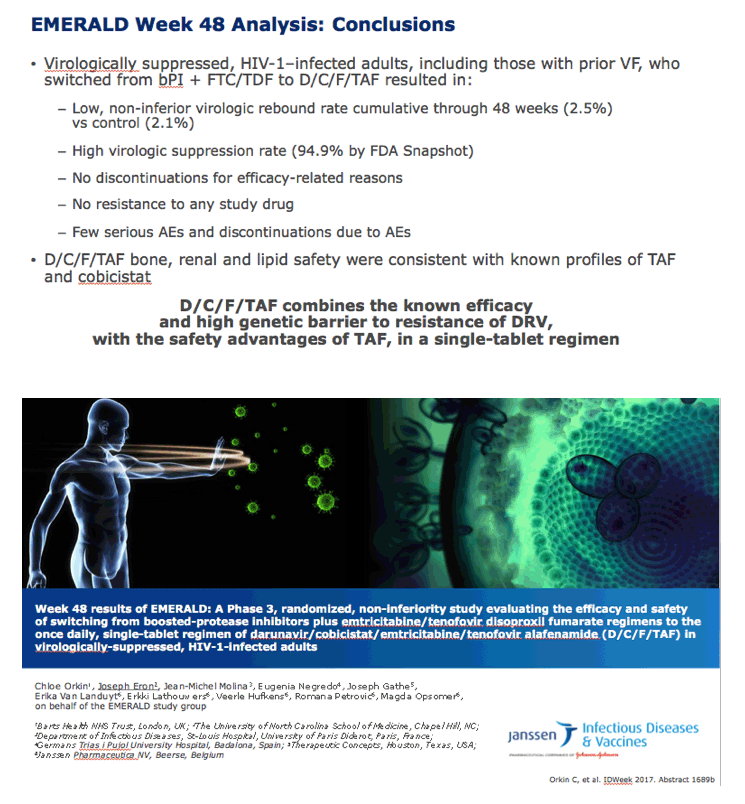
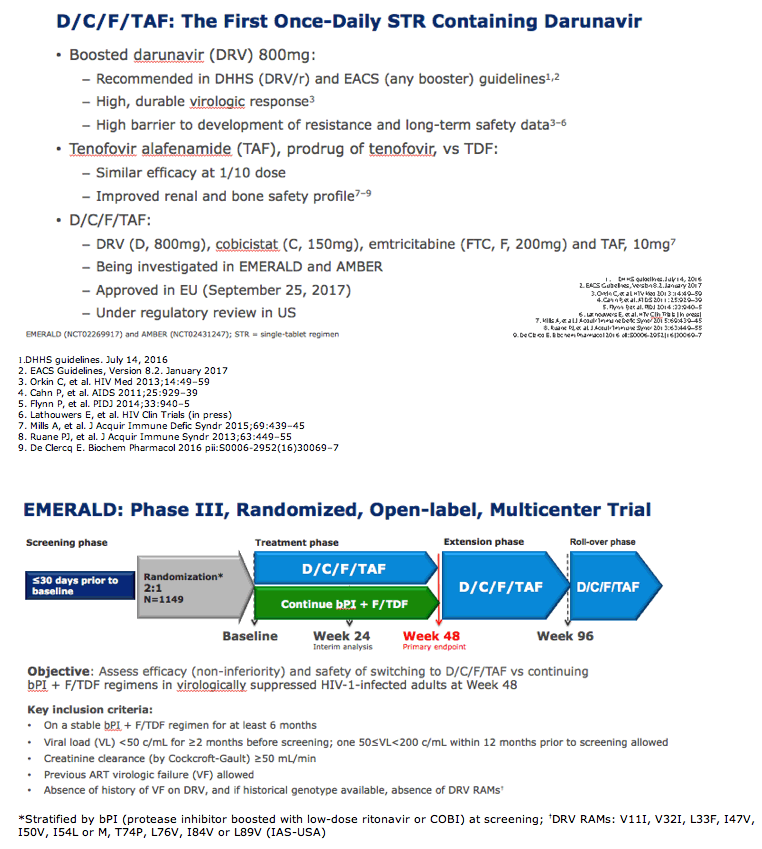
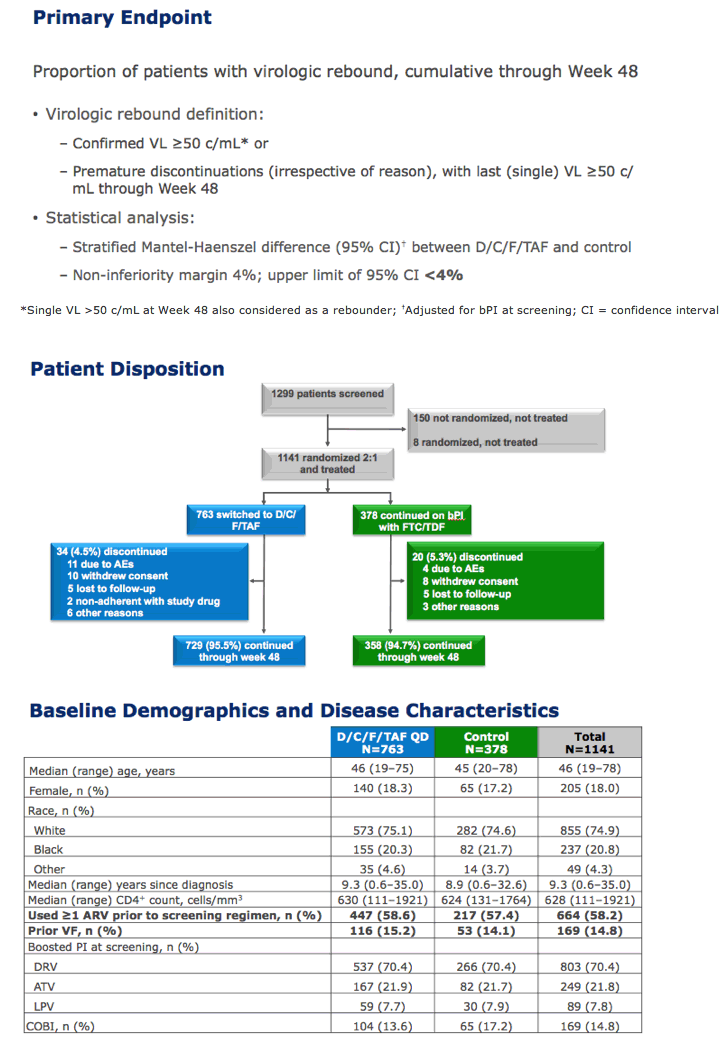
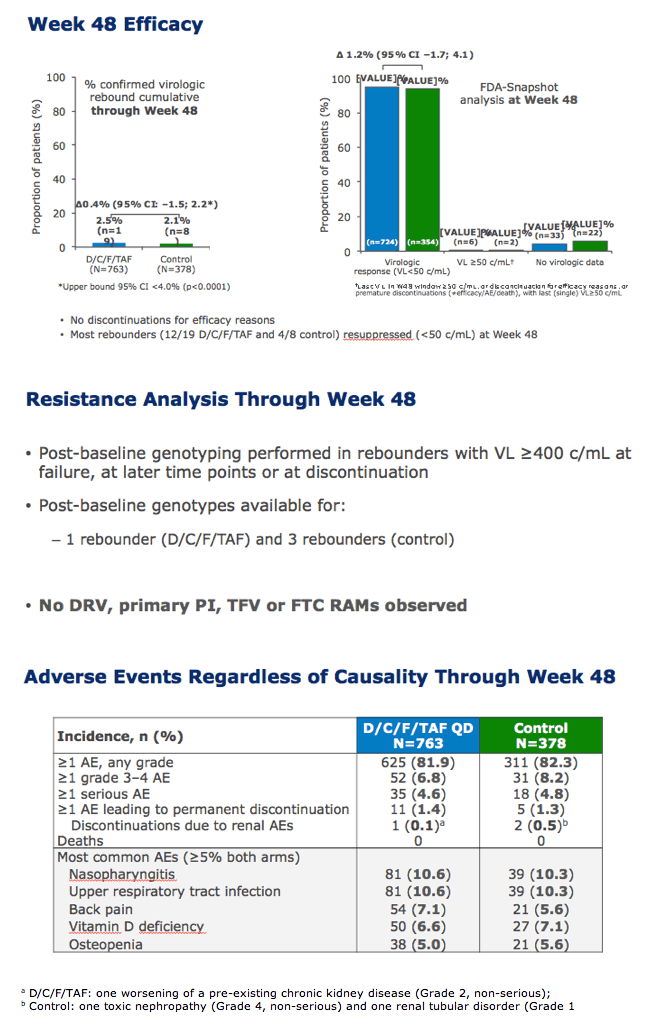
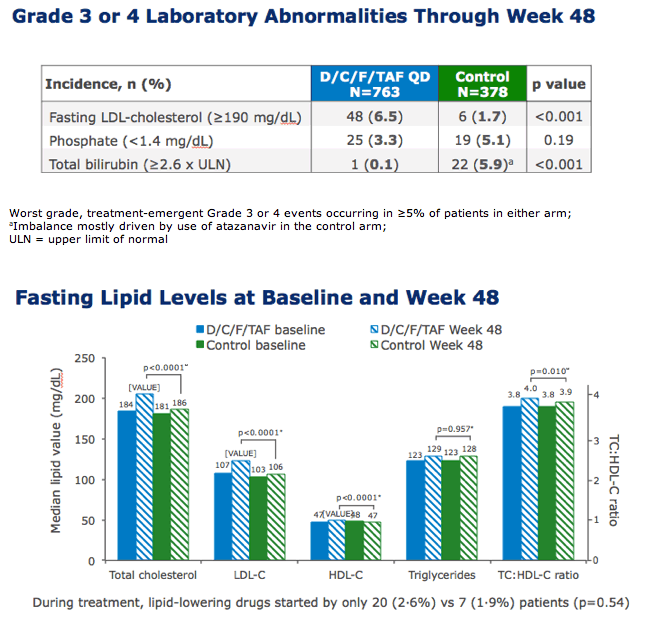
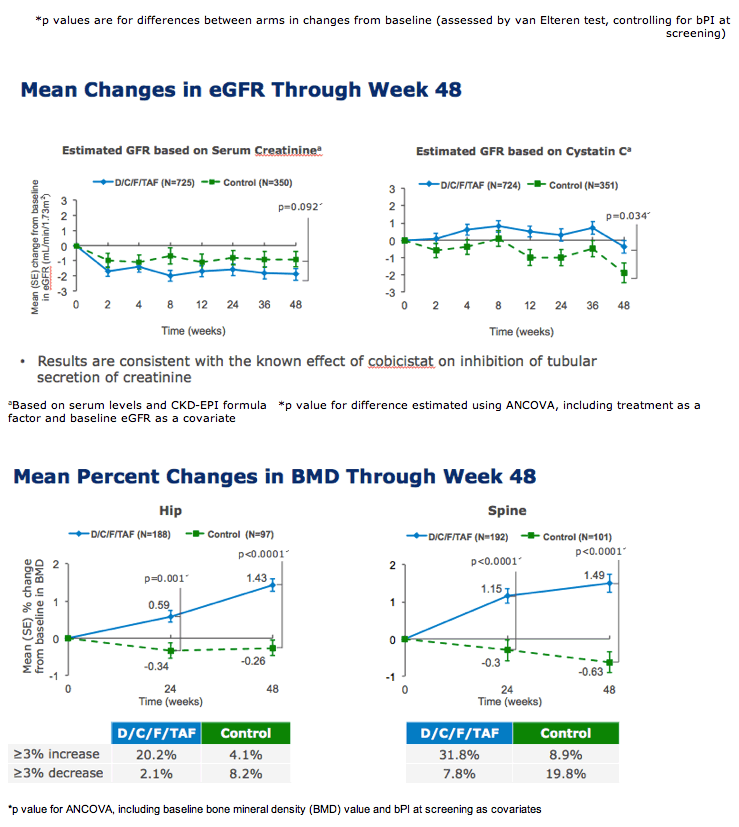

|
| |
|
 |
 |
|
|